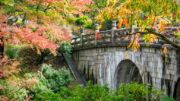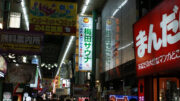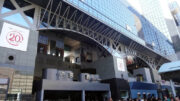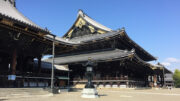Maruyama Park is a must-see attraction for anyone visiting Kyoto, Japan. This picturesque park, located in the Higashiyama District, is known for its stunning cherry blossom trees, beautiful pond, and the impressive Yasaka shrine.
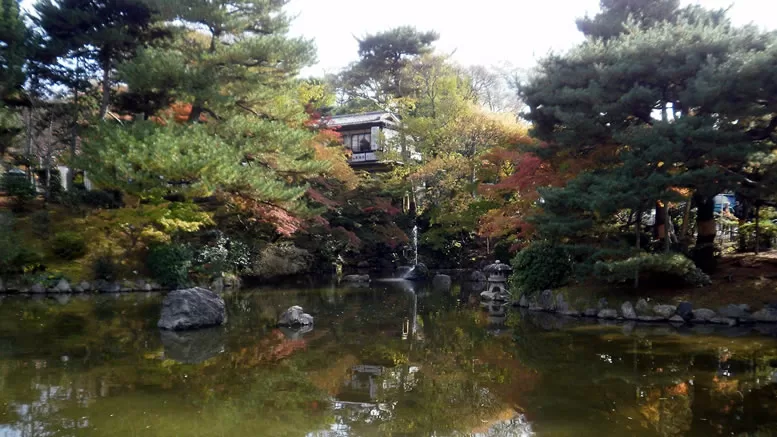
Maruyama Park was established in 1886 and is one of Kyoto’s oldest and most beloved parks. Originally, the park was part of the nearby Chion-in Temple’s grounds. It was opened to the public during the Meiji period, and its name “Maruyama” means “circle mountain,” referring to the nearby Higashiyama Mountains. In 1913 the park was renovated by landscape gardener Jihei Ogawa, who had famously designed the popular gardens of Heian Shrine and Kyu-Furukawa Gardens.
Maruyama Park is a beautiful and peaceful oasis in the heart of Kyoto. Whether you’re visiting during the cherry blossom season or any other time of year, the park’s natural beauty and cultural attractions make it a must-visit spot in Kyoto.
Top Attractions in Maruyama Park
Cherry Blossom Trees
One of the most popular times to visit Maruyama Park is during the cherry blossom season, usually in late March to early April. The park is home to over 800 cherry blossom trees, including the famous weeping cherry tree, which is illuminated at night. During the cherry blossom season, the park is packed with locals and tourists who come to admire the beauty of the cherry blossoms and enjoy hanami (cherry blossom viewing) parties.
Maruyama Pond
Maruyama Pond is a stunning feature of the park, and it’s surrounded by picturesque bridges and walking paths. Visitors can rent a rowboat and enjoy a relaxing ride on the pond or stroll around the walking paths and take in the beauty of the serene surroundings. The pond is home to several species of fish and birds, and it’s a popular spot for photography.
Yasaka Shrine
Yasaka Shrine, also known as Gion Shrine, is located at the eastern end of Maruyama Park. It’s one of Kyoto’s most famous Shinto shrines and is believed to date back to the 7th century. The shrine is dedicated to Susanoo-no-Mikoto, a deity of storms and the sea, and it’s believed to offer good fortune in business, health, and relationships.
Chion-in Temple
Chion-in is a Buddhist temple complex located at the western end of Maruyama Park. The temple was founded in 1234 and is the headquarters of the Jodo sect of Japanese Buddhism. The complex includes several beautiful buildings and gardens, including the largest wooden structure in Japan, the Mieido Hall, and the beautiful Taizoin Garden.
Practical Tips for Visiting Maruyama Park
- Timing: If you’re visiting Maruyama Park during the cherry blossom season, be prepared for large crowds. It’s best to arrive early in the morning or late at night to avoid the crowds.
- Wear Comfortable Shoes: Maruyama Park is quite large, and there’s a lot of walking involved, so make sure to wear comfortable shoes.
- Bring a Picnic: The park is an excellent spot for a picnic. You can bring your own food or purchase some snacks from the vendors near the entrance.
- Check the Weather: The weather in Kyoto can be unpredictable, so make sure to check the forecast before you go. Bring an umbrella or rain jacket if rain is in the forecast.
Getting to Maruyama Park
Getting to Maruyama Park is relatively easy as it’s located in the heart of Kyoto at the eastern end of the Gion district. Here are some ways to get there:
By Train or Subway: The nearest train station to Maruyama Park is Gion-Shijo Station on the Keihan Line. From the station, it’s a 10-15 minute walk to the park. Alternatively, you can take the subway to Higashiyama Station on the Tozai Line, which is about a 20-minute walk from the park.
By Bus: There are several buses that stop near Maruyama Park, including the Kyoto City Bus numbers 100 and 206. Get off at Gion bus stop, and the park is a short walk away.
By Taxi: Taxis are readily available in Kyoto and are a convenient way to get to Maruyama Park. However, they can be expensive, especially during peak travel seasons.

